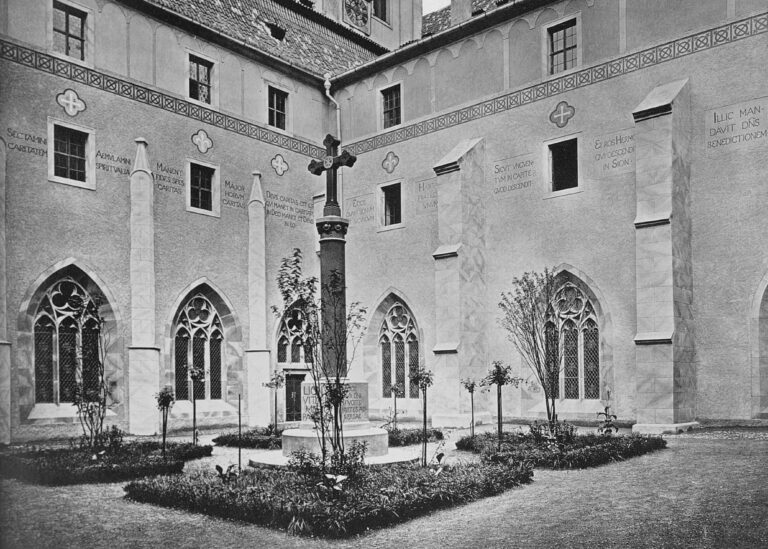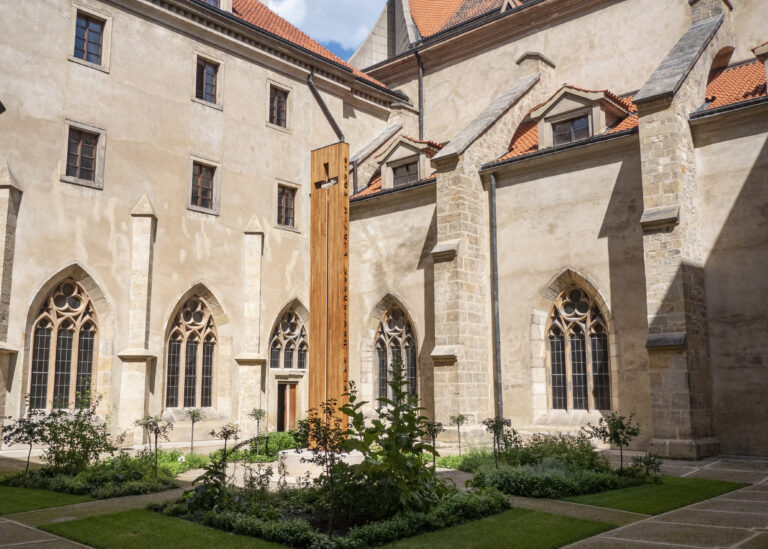Cloister yard
Cloister yard is traditionally part of monasteries, not only Benedictine ones. The arcades around the perimeter of the courtyard did not originally have glazed windows. In the Baroque period, their openings were made smaller and then rehabilitated to its original form and glazed in the Beuron period at the end of the 19th century.
At this time, the arrangement of the cloister yard area with flower beds and paths was incorporated into the centre. In the middle of the yard, a cross with a wooden base was erected, approximately 7 m high. The following Latin inscriptions were engraved into the base: LIGNUM VITAE IN MEDIO PARADISI (The tree of life in the middle of paradise), ECCE CRUX DOMINI FUGITE PARTES ADVERSAE (Behold the Cross of the Lord, flee adversaries) and CHRISTUS AB OMNI MALO PLEBEM SUAM DEFENDAT (Christ defends his people from all evil). This arrangement inspired the reconstruction carried out in 2016-2017.
The central cross took on an inverted form; its shape is defined by the mass of wood surrounding the empty space. The inscriptions are used in their Czech translation. At the foot of the cross, the monogram of Jesus Christ or Chrismon (a compound of the letters X and P) laid out from stone bands, was also part of the original cross.
...you can travel back through time by swiping
...you can travel back through time by swiping
 HISTORY
HISTORY
 PRESENT
PRESENT
Did you know that...?
The common cloister yard medicinal and aromatic herbs and spices were planted. Roses have an ornamental role and in the past were often used for the church decoration.


